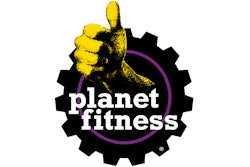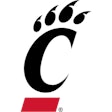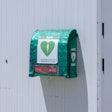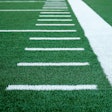A 42-year-old man is in critical condition after falling 21 feet from an escalator Sunday at MetLife Stadium in East Rutherford, N.J. Few details exist as to what factors may have contributed to the incident, which occurred at about 4 p.m. after the New York Giants rallied to defeat the Washington Redskins, 27-23.
It was the second escalator fall this season. In August, 25-year-old Jonathan Kelly fell three stories from an escalator at Reliant Stadium in Houston and died at a local hospital. He was believed to be attempting to slide down the escalator's rail, the same type of action that claimed the life of Robert Seamans, 27, at Denver's Coors Field in May 2011.
The fan injured Sunday, David Chupcavich of Orange, Conn., landed on a steel stage and was airlifted to Hackensack University Medical Center. An investigation is ongoing, according to New Jersey State Police. His condition has not been updated since Sunday night per the privacy wishes of Chupcavich's family, according to the Newark Star-Ledger.
Just as fans stadium escalator falls and mechanical failures begs the question: Can anything be done from a design standpoint to prevent future tragedies? "It would be nearly impossible to foolproof an escalator against every potential scenario that could cause an accident," says Dotty Stanlaske, executive director of the National Association of Elevator Safety Authorities, which oversees certification of elevator and escalator inspectors. "And that's because of the nature of what they're intended to do - convey people. Unfortunately, people don't always utilize them the way they should."
The barrier along either side of an escalator must measure a minimum of 40 inches vertically from deck level to handrail, according to current code language, Stanlaske says. "The handrails are high enough that they're the same height as most railings on stairways and in stairwells," she adds. "You don't expect people to go over those, but unfortunately sometimes they do."
That said, it's hard to envision many design scenarios in which a person could free-fall 20 to 60 feet from a stairway. Couldn't a guardrail above and beyond the handrail be incorporated to better contain escalator passengers? "It's not that there can't be," Stanlaske says. "Certainly anybody could put something up, a wall or some kind of barricade, for the full run of the escalator. But then they have to consider whether it's a pinching hazard or a sheering hazard. The only way that you would make the escalator totally safe from falls over the edge would be to ensure that there's no space at the edge for people to fall through or fall down from, and buildings aren't going to want to spend that kind of money. You have to rely on common sense [of passengers]."
ASME A17.1 Safety Code for Elevators and Escalators does state - and has for at least a decade, according to Stanlaske - that "a caution sign shall be located at the top and bottom landing of each escalator, readily visible to the boarding passengers" and containing the following language: "Caution. Passengers only. Hold handrail. Attend children. Avoid sides."
MetLife Stadium, which opened in April 2010, features 38 "heavy duty" escalators, according to manufacturer Fujitec, whose escalators can also be found at Lincoln Financial Field in Philadelphia and Great American Ball Park in Cincinnati. The MetLife Stadium website breaks that number down further as 30 escalators and eight "premium" escalators, though the distinction is not clear. The total, which compares to 21 total elevators in the stadium, is "14 more escalators than the old stadium and will contribute significantly to getting from your car to your seat in record time," the site says.





































